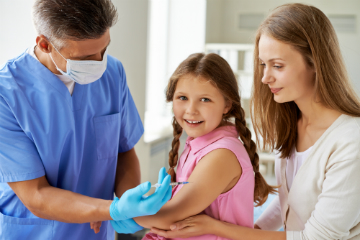All you need to know about polio
 What is polio?
What is polio?
Poliomyelitis (polio) is a highly infectious disease caused by the polio virus. It invades the nervous system, and can cause paralysis or even death. Due to routine immunisations in childhood, polio hasn't been seen in South Africa since 1989. However, there have been outbreaks of polio in neighbouring countries.
According to the World Health Organization (WHO), one in 200 polio infections will result in permanent paralysis. Among those paralysed, 5%-10% die when their breathing muscles are immobilised by the virus.
However, the disease has been largely eradicated thanks to the development of the polio vaccine.
Polio is an illness that causes sudden weakness/lameness of the limbs and sometimes death in children and can be passed easily from one person to another. The polio virus affects mostly children below 5 years.
How to recognose polio
Polio can be suspected when there is sudden weakness of the leg or arm or both or other parts of the body. This weakness shouldn't have been present at birth. If the person was injured just before the weakness, then polio isn't likely to be the cause of the weakness.
Please report any sudden weakness/paralysis in a child under 15 years (not caused by injury), to the nearest clinic for investigation. It could be polio!
Types of polio
There are 3 kinds of polio:
- Sub-clinical which does not affect the central nervous system.
- Non-paralytic which does affect the central nervous system, produces only mild symptoms and doesn't result in paralysis.
- Paralytic which is rare, but is also the most serious form of polio, which produces full or partial paralysis in the patient or host body. Paralytic polio consists of 3 sub-types namely spinal polio (which affects the spine), bulbar polio (which affects the brainstem), and bulbospinal polio (which affects the spine and the brainstem).
Causes of polio
The polio virus is often transmitted from person to person through faecal matter. People living in areas with limited access to clean water or flush toilets often get the virus from drinking water contaminated by human waste that contains the virus.
The virus can also be spread by contaminated food or water or direct contact with another infected person.
Symptoms of polio
- Sub-clinical polio:
- headache,
- sore, red throat,
- slight fever,
- vomiting, and
- general discomfort.
- Non-paralytic polio:

- fever,
- sore throat in the absence of upper respiratory infection,
- headache,
- vomiting,
- fatigue,
- abnormal reflexes,
- problems swallowing and/or breathing,
- back and neck pain as well as stiffness, particularly neck stiffness with forward movement of the neck,
- arm and leg pain or stiffness, and
- muscle tenderness and spasms.
- paralytic polio:
- loss of reflexes,
- severe spasms and muscle pain,
- loose and floppy arms and legs, sometimes on just one side of the body, this is due to the weakness which results from the involvement of the spine,
- sudden paralysis (temporary or permanent), and
- deformed limbs (especially the hips, ankles, and feet due to prolonged weakness and the lack of appropriate orthopaedic bracing.
How to prevent getting polio
Immunisation is the best way to protect yourself against polio. You can visit your nearest clinic to get a polio vaccination. Children should be immunised with polio drops received at birth, 6 weeks, 10 weeks, 14 weeks, 18 months and 5 years of age.
How can the community help in the prevention of polio?
Community members and parents can help by:
- Making sure that all children are immunised against polio by taking all eligible children to your nearest clinic for routine immunisation with the polio vaccine.
- Making sure that all children are immunised with the polio vaccine at birth, 6, 10, 14 weeks, and 18 months.
- Talk to healthcare workers at your clinic or hospital and follow the immunisation schedule on when, how and where the vaccine is given.
- Immediately reporting any child under the age of 15 years of age who develops sudden weakness of either an arm and/or leg (without any injury), to the nearest clinic or hospital for investigations to confirm whether it's polio or not.


